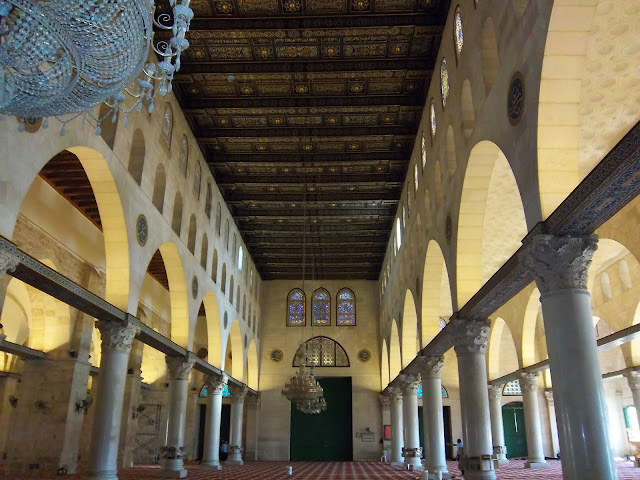It is Shabbat. And I am on my laptop. And it's
beseder, (ok) because I am a Reconstructionist (Episcopalian). I'm also a daughter of Zion as we (some of us) say in the black church. And I just can't keep it to myself. The good news.
And I have heard a lot of bad news. I have been just sick over the stories my Palestinian sisters and brothers in Christ, Muslim sisters and brothers, hosts and new friends have been telling me and what I have seen and felt and experienced at the Bethlehem checkpoint and in an orthodox neighborhood one time when I was lost. And the words that have been seared into me, that having been read cannot be unknown - that there are some rabbis here who say the highest ethical principles in Judaism, to save a life, love of neighbor, welcome and respite for the stranger do not apply to non-Jews. I heard these words as heretical, counter to the Torah I know and love and as an inversion of the Rabbinic tradition for which I have so much respect and in which I take so much delight. Of course there are always other voices saying that is not the Judaism they know, love and practice. But seeing those words (in the comment section of an editorial advocating peace and justice, countering the opinion being offered) wounded me. I experienced them violently. As a RRC seminarian told me today, "the hermeneutic stakes are so high here." These words can sanction (more) violence, the last thing this holy hurting place needs.
I write all of this as preamble, so that you will know how conflicted I was over my love of Israel and Judaism and my place
b'shareka (with in your gates), and on the margins. And as I was wrestling, I spent time with former students, now friends, and we went to services. First the Kabbalat Shabbat service at Nava Tehila. It was the monthly service in the Renewal tradition.
And it was exquisitely beautiful, passionate, holy, welcoming and healing. For the first time in Jerusalem I experienced the
sukkat shalom, the canopy of peace. Her wings spread over that assembly welcoming all from every ethnic, national and religious background as integral to the prayer space.
The very first prayer-song, yadid nephesh, (Beloved of the Soul) was a gorgeous Spanish guitar arrangement, that my soul is still singing.
Here is that same arrangement, recorded on another (not Shabbat) occasion.
(In case the embedding does not work
here is a link.)
And as we prayed that prayer: Blessed be the One who spreads her shelter of peace over us, and over all her people Israel, and over all who dwell in the world and over Jerusalem, I was renewed and healed.
And in the morning, we went back for the monthly Reconstructionist service. I felt as though I had come home (as I did when I first went to St. George.) It was the service I knew with the prayerbook I knew and so many connections to Philly and RRC, and such wonderful conversations.
It was Shabbat Pincas (which I thought I had
drashed last year, but was actually two years ago). I have been working with this text in which there is so much religious violence for my new book, and was overwhelmed with the intersection between religious and political violence. But the same parsha includes the genealogies of Serach bat Asher and Hoglah, Mahlah, Milchah, Noah and Tirtzah, the daughters of Tzelophehad, and their story in which the Torah is literally reconstructed.
I left on eagle's wings, redeemed from the rhetoric of violence. Shabbat Shalom.





















































